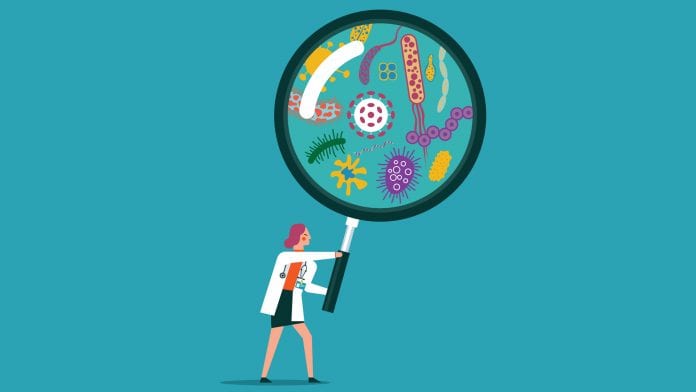
Researchers have discovered how stimulating an ‘immune cleanup’ could offer a potential treatment for people suffering from a rare disorder named leukocyte adhesion deficiency type 1 (LAD1).
Leukocyte adhesion deficiency type 1 (LAD1) is a rare genetic mutation that causes people to have symptoms such as infections and gum disease, and are the result of an immune system dysfunction. Researchers now believe they may have discovered a treatment for the rare disorder.
In a new study in the Journal of Leukocyte Biology, School of Dental Medicine researchers and colleagues identified a novel strategy of an ‘immune cleanup’ for addressing an underlying cause of LAD1 patients’ symptoms.
Resolving inflammation
In healthy people, the clearance of dying neutrophils (a type of white blood cell), a type of ‘cleaning up’ takes place which is known as efferocytosis. This removes inflammation and allows tissues to regenerate. LAD1 patients lack these specialist neutrophils in their tissues.
To find out more about the rare disorder and find potential treatment, scientists used a molecule to mimic the effects of efferocytosis that are absent in LAD1 in an animal model, showing that the treatment not only prevented inflammation in the gums as well as dental-bone loss, it also allowed the bone to regenerate.
George Hajishengallis, a senior author of the work and a professor at Penn Dental Medicine, said: “This treatment may not only be relevant for LAD1. There are other conditions where we see poor or no accumulation of neutrophils in the gingiva, such as in Papillon-Lefèvre or Chediak-Higashi syndrome. There are also several conditions that cause neutropenia, where neutrophil numbers are low, such as congenital or autoimmune-related neutropenia, or cancer- and HIV-associated neutropenia, where offering a treatment to mimic efferocytosis may also have beneficial effects.”
The role of efferocytosis
Until now, scientists believed that leukocyte adhesion deficiency patients had severe gum disease because of their lack of neutrophils in the gingival tissue.
Hajishengallis said: “But when we analysed tissues, especially from human patients, we didn’t see any tissue-invasive infections that would justify the destruction we saw there.”
Hajishengallis wondered whether the problem with the lack of neutrophils in the tissues may not be a defect in bacterial surveillance but with efferocytosis – a process whereby a type of immune cell, macrophages, destroys the dying neutrophils.
To test the theory the researchers blocked the process using an antibody that inhibits a receptor that otherwise promotes efferocytosis. The test resulted in inflammation which gave the researchers confidence that a lack of efferocytosis might be the problem.
The researchers then delivered small-molecule compounds that activate these receptors to the gums of LAD1 mice. This also alleviated signs of inflammation and blocked further bone loss in the mouth. Despite the treatment only lasting three days, however, the bone was already regenerating in the treated animals.
Treatment for the rare disorder
Hajishengallis of Penn’s School of Dental Medicine had already been part of a collaboration that identified an underlying cause of the abundant inflammation seen in LAD1 patients: high levels of the pro-inflammatory signalling molecule IL-23 and its downstream target IL-17. Blocking IL-23 with an antibody helped resolve the disease.
The researchers believe the small molecule compounds that mimic efferocytosis could be both safer and more affordable than using antibodies.
“These molecules, because they’re not inhibiting any important functions but are rather inducing pro-resolving pathways, are less likely to cause negative effects than other strategies,” says Tetsuhiro Kajikawa, the lead author of the study. “The challenge now is practical: how will these be administered?”
Hajishengallis and his team believe that systemic administration could be very appropriate and even beneficial.







